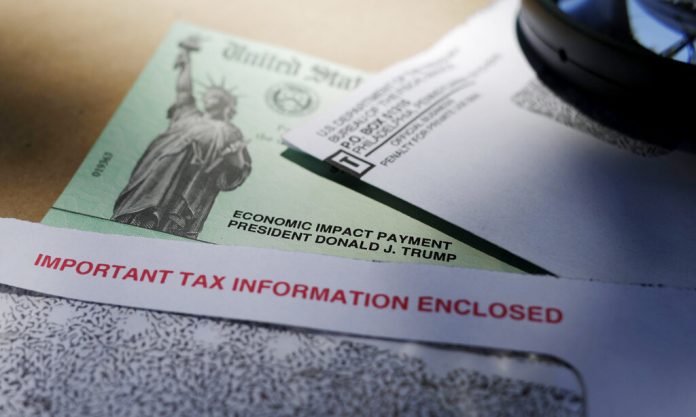
A third round of stimulus checks has taken another step towards Americans’ homes as the House Budget Committee approved President Joe Biden’s $1.9 trillion Covid-19 relief bill, also known as the American Rescue Plan (ARP).
MassLive.com reports the committee voted 19 to 16 on Monday to push the package forward. House Speaker Nancy Pelosi vowed to hold a final vote by Friday and Senate Majority Leader Chuck Schumer has promised to pass the bill by March 14, when the current round of unemployment assistance and other coronavirus aid expires.
“We must act swiftly to put an end to this pandemic and to stem the suffering felt by so many millions,” Pelosi said in a statement.
NJ.com reports the ARP’s next hurdle is the House Rules Committee, which will decide what amendments, if any, will be allowed when the bill reaches the floor for debate and votes. Democrats control both chambers of Congress, but Republicans have objected to some items in the package including $350 billion in aid for state and local governments and a raise in the federal minimum wage to $15 an hour.
How much will I get?
House committees have approved giving the full $1,400 to individuals with incomes of up to $75,000 (phasing out until $100,000) and $2,800 for married couples earning up to $150,000 (phasing out until $200,000), similar to the first two rounds of stimulus checks. Roughly 85% of U.S. adults would be eligible for the full amount, based on your income from your most recent tax return.
Combined with the $600 stimulus checks approved by President Donald Trump in December, the package would mean $2,000 in direct payments to most Americans.
Parents would also receive $1,400 per dependent, instead of $600 in the first two rounds, and this third round of checks will include eligible adult dependents for the first time. The previous two rounds were limited to children under age 17, so parents with college-age students can expect even more money.
That means that a family of four could receive $5,600 — in addition to the new Child Tax Credit.
Chairman of the Ways and Means Committee Richard Neal (D-Mass.) has proposed a child tax credit of $3,000 per child ages 6 to 17 and $3,600 for children under age 6. The credit, based on the taxpayer’s 2020 income, would normally be a lump sum on an individual or family’s income tax return but will instead be delivered as a monthly payment from the IRS for $250 or $300, depending on the child’s or children’s age, for a full year to help families affected by the pandemic.
The current child tax credit, from the Tax Cuts and Jobs Act of 2017, provides $2,000 per child under 17 for single filers with incomes of $200,000 or less and couples filing jointly with $400,000 of adjusted gross income or less.
When will I get my stimulus check?
Late March, most likely.
After the second round was approved and signed by Trump, payments started going out within days. The first round of checks took weeks to begin arriving, even via direct deposit, but millions will receive the third round quickly if they have already verified their information on the IRS “Get My Payment” site.
Congress aims to have the bill on Biden’s desk by March 14, and delays are unlikely as Democrats can pass it in the Senate with a simple majority, bypassing a possible filibuster from Republicans.
That deadline means those with direct deposit could get their stimulus checks in late March and those who receive paper checks or debit cards would likely expect to receive their payments later in the spring.
What else is in the new coronavirus relief bill?
President Biden first proposed the $1.9 trillion relief package last month, including $400 in weekly unemployment benefits; $70 billion towards vaccination centers and Covid-19 testing; $130 billion to help schools reopen safely; $15 billion in small business grants; $350 billion in emergency funding for state, local and territorial governments; raising the federal minimum wage to $15 per hour (from the current rate of $7.25 an hour); reinstating paid sick leave; and $15 billion to help states subsidize child care for low-income families along with a $25 billion fund to help child care centers in danger of closing.







